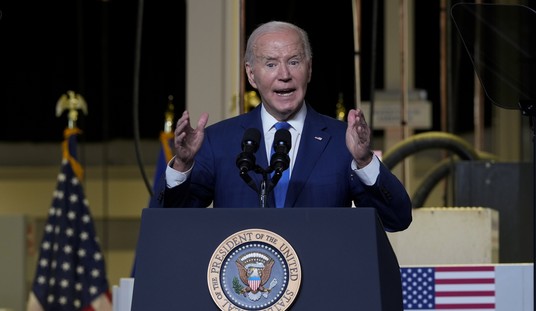I’ve written several times about the importance of appointing sensible people to head the Congressional Budget Office (CBO) and Joint Committee on Taxation (JCT). Heck, making reforms to these Capitol Hill bureaucracies is a basic competency test for Republicans.
That’s because CBO and JCT are the official scorekeepers when politicians consider changes in fiscal policy and it has a big (and bad) impact if they rely on outdated methods and bad analysis.
The CBO, for instance, puts together economic analysis and baseline forecasts of revenue and spending, while also estimating what will happen if there are changes to spending programs.  Seems like a straightforward task, but what if the bureaucrats assume thatgovernment spending “stimulates” the economy and they fail to measure the harmful impact of diverting resources from the productive sector of the economy to Washington?
Seems like a straightforward task, but what if the bureaucrats assume thatgovernment spending “stimulates” the economy and they fail to measure the harmful impact of diverting resources from the productive sector of the economy to Washington?
The JCT, by contrast, prepares estimates of what will happen to revenue if politicians make various changes in tax policy. Sounds like a simple task, but what if the bureaucrats make the ridiculous assumption that tax policy has no measurable impact on jobs, growth, or competitiveness, which leads to the preposterous conclusion that you maximize revenue with 100 percent tax rates?
Writing for Investor’s Business Daily, former Treasury Department officials Ernie Christian and Gary Robbins explain why the controversy over these topics – sometimes referred to as “static scoring” vs “dynamic scoring” – is so important.
It is Economics 101 that many federal taxes, regulations and spending programs create powerful incentives for people not to work, save, invest or otherwise efficiently perform the functions essential to their own well-being. These government-induced changes in behavior set off a chain reaction of macroeconomic effects that impair GDP growth, kill jobs, lower incomes and restrict upward mobility, especially among lower- and middle-income families. …Such measurements are de rigueur among credible academic and private-sector researchers who seek to determine the true size of the tax and regulatory burden on the economy and the true value of government spending, taking into account the economic damage it often causes.
Recommended
But not all supposed experts look at these second-order or indirect effects of government policy.
And what’s amazing is that the official scorekeepers in Washington are the ones who refuse to recognize the real-world impact of changes in government policy.
These indirect costs of government, in particular or in total, have not been calculated and disclosed in the Budget of the United States or in analyses by the Congressional Budget Office. The result of this deliberate omission by Washington has been to understate many costs of government, often by more than 100%, and grossly overstate its benefits. …It is on this foundation of disinformation that the highly disrespected, overly expensive and too often destructive federal government in Washington has been built.
Christian and Robbins look specifically at the direct and indirect costs of the income tax.
The income tax is a two-part tax, one acknowledged and one deliberately concealed. First, almost $2 trillion of income tax is collected by the IRS for government to spend for presumably beneficial purposes. Then there is the tax-induced economic damage, a stealth tax, indirectly picked from people’s pockets in the form of fewer jobs and lower incomes. This stealth tax is $3.2 trillion each year. …economists often refer to the stealth tax as a deadweight loss. …When the $2 trillion of income tax taken directly out of the economy by the IRS is added to the $3.2 trillion of indirect economic cost, the total private-sector cost of the income tax is $5.2 trillion — and the government has only $2 trillion of income tax revenues to spend in trying to repair the damage.
By the way, I must disagree with the last part of this excerpt.
Government doesn’t “repair the damage” of high taxes when it spends money. Most of the time, it exacerbates the damage of high taxes by spending money in ways that further weaken the economy.
Let’s now get back to the part of the editorial that I like. Ernie and Gary make the very important point that some taxes do more damage than others.
…when the IRS collects a dollar of income tax from corporations, the damage to the overall economy is about $4. Similarly, a dollar of tax on capital gains sets off a ripple effect that does about $6 of damage. Poison pills such as capitalizing (instead of expensing) the job-creating cost of machinery and equipment, taxing dividends, double-taxing personal saving and imposing high tax rates result in stealth taxes ranging from $3 to $8 per dollar of revenues. …Low tax rates do less damage to economic growth per dollar of revenues raised and are preferable to high tax rates, which have the opposite effect.
Here’s a chart based on their analysis.
I’m not overly fixated on their specific estimates. Even good economists, after all, have a hard time making accurate forecasts and correctly isolating the impact of discrete policies on overall economic performance. Moreover, it’s very difficult to factor in the economic impact of America’s tax-haven policies for foreign investors, which help offset the damage of high tax burdens on American citizens.
But Christian and Robbins are completely correct about certain taxes doing more damage than other taxes.
And the lesson they teach us is that the tax bias against saving and investment is extremely destructive.
And the less fortunate are particularly disadvantaged when bad methodology at CBO and JCT perpetuates bad policy.
…it is self-defeating and harmful to require that tax reforms always be revenue neutral in a near-term static sense. Imagine a tax reform that initially costs the IRS $1. Through economic growth, it promptly increases taxable income and well-offness by $2.50. At an average tax rate of 20%, the reform-induced $2.50 increase in taxable income at the outset recoups only 50 cents of the initial $1 cost to the IRS, thereby leaving the IRS 50 cents short in the near term. But who in the White House or Congress would refuse to make mostly lower and middle-income families $2.50 better off at a cost of only 50 cents to Washington’s already overflowing coffers?
The final sentence of the excerpt hits the nail on the head.
I’ve previously cited academic research and expert analysis to show that it is pointlessly punitive to raise tax rates if the damage to the private sector is several times greater than the additional revenue collected by government.
several times greater than the additional revenue collected by government.
Yet there are plenty of examples of this type of short-sighted analysis, such as Obama’s proposal to expand the Social Security payroll tax (see the 6:43-7:41 section of this video)
And if you like videos, I have a three-part series on the Laffer Curve which is part of this post offering a lesson from the 1980s for Barack Obama.
The bottom line is that we’ll continue to get bad analysis and bad numbers if Republicans aren’t smart enough to clean house at CBO and JCT.


























Join the conversation as a VIP Member